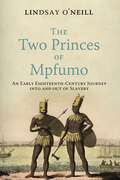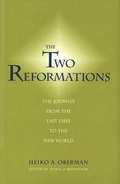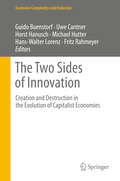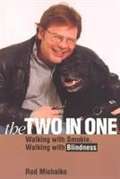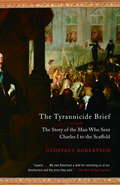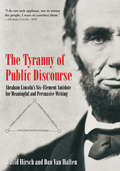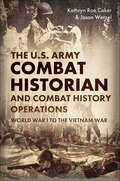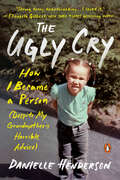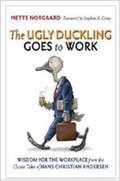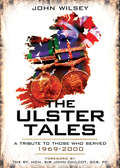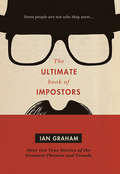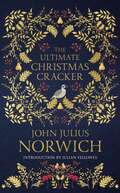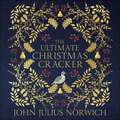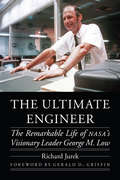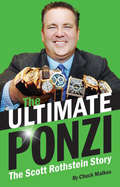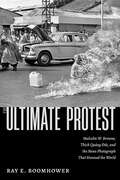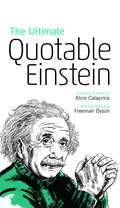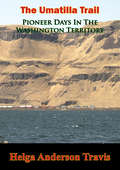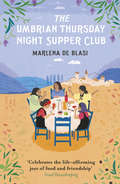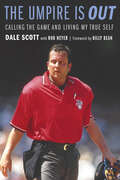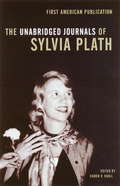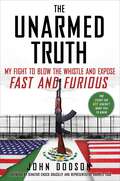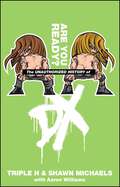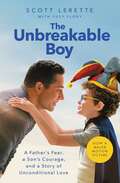- Table View
- List View
The Two Princes of Mpfumo: An Early Eighteenth-Century Journey into and out of Slavery (The Early Modern Americas)
by Lindsay O'NeillA fascinating account of two eighteenth-century princes from East Africa, their travels, and their encounters with the British Empire and slaveryIn 1716 two princes from Mpfumo—what is today Maputo, the capital of Mozambique—boarded a ship licensed by the East India Company bound for England. Instead, their perfidious captain sold them into slavery in Jamaica. After two years of pleading their case, the princes—known in the historical record as Prince James and Prince John—convinced a lawyer to purchase them, free them, and travel with them to London. The lawyer perished when a hurricane wrecked their ship, but the princes survived and arrived in England in 1720. Even though the East India Company had initially thought that the princes might assist in their aspirations to develop a trade for gold in East Africa and for enslaved labor in Madagascar, its interest waned. The princes would need to look elsewhere to return home. It was at this point that members of the Royal African Company and the Society for Promoting Christian Knowledge took up their cause, in the hope that profit and perhaps Christian souls would follow. John would make it home, but tragically, James would end his own life just before the ship sailed for Africa.In The Two Princes of Mpfumo, Lindsay O’Neill brings to life individuals caught up in the eighteenth-century slave trade. O’Neill also shows how the princes’ experiences reflect the fragmented, chaotic, and often deadly realities of the early British empire. A fascinating and deeply researched historical narrative, The Two Princes of Mpfumo blurs the boundaries between the Atlantic and Indian ocean worlds; reveals the intertwined networks, powerful individuals, and unstable knowledge that guided British attempts at imperial expansion; and illuminates the power of African polities, which decided who lived and who died on their coasts.
The Two Reformations: The Journey from the Last Days to the New World
by Heiko A. Oberman Donald WeinsteinIn this last collection of his vital, controversial, and accessible writings, Oberman seeks to liberate and broaden our understanding of the European Reformation, from its origins in medieval philosophy and theology through the Puritan settlers who brought Calvin's vision to the New World. Ranging over many topics, he finds fascinating connections between aspects of the Reformation and twentieth-century history and thought--most notably the connection to Nazism and the Holocaust.
The Two Sides of Innovation
by Uwe Cantner Guido Buenstorf Horst Hanusch Michael Hutter Hans-Walter Lorenz Fritz RahmeyerThis volume is devoted to innovation with a special focus on its two sides, namely creation and destruction, and on its role in the evolution of capitalist economies. The first part of the book looks at innovation and its effects on economic performance, addressing issues of motives, behavioral rules under uncertainty, actor properties, and technology characteristics. The second part concentrates on potential consequences of innovative activities, in particular structural change, the "innovation-mediated" effect of skill-oriented policies on regional performance, the destructive effects of innovation activities, and the question whether novelty is always good. The role of innovation in the evolution of capitalism itself is discussed in the third part.
The Two-In-One: Walking With Smokie, Walking With Blindness
by Rod MichalkoWhen Rod Michalko's sight finally became so limited that he no longer felt safe on busy city streets, he began to search for a guide.
The Tyrannicide Brief: The Story of the Man Who Sent Charles I to the Scaffold
by Geoffrey RobertsonCharles I waged civil wars that cost one in ten Englishmen their lives. But in 1649 Parliament was hard put to find a lawyer with the skill and daring to prosecute a king who claimed to be above the law. In the end, they chose the radical lawyer John Cooke, whose Puritan conscience, political vision, and love of civil liberties gave him the courage to bring the king to trial. As a result, Charles I was beheaded, but eleven years later Cooke himself was arrested, tried, and executed at the hands of Charles II.Geoffrey Robertson, a renowned human rights lawyer, provides a vivid new reading of the tumultuous Civil War years, exposing long-hidden truths: that the king was guilty, that his execution was necessary to establish the sovereignty of Parliament, that the regicide trials were rigged and their victims should be seen as national heroes. Cooke’s trial of Charles I, the first trial of a head of state for waging war on his own people, became a forerunner of the trials of Augusto Pinochet, Slobodan Milosevic, and Saddam Hussein. The Tyrannicide Brief is a superb work of history that casts a revelatory light on some of the most important issues of our time.
The Tyranny of Public Discourse: Abraham Lincoln’s Six-Element Antidote for Meaningful and Persuasive Writing
by David Hirsch Dan Van HaftenAre you satisfied with the current state of public discourse? The almost unanimous response from people across the nation is a loud and emphatic “No!” The reply is always the same regardless of politics. Today’s public discourse typically starts with a “conclusion” and goes downhill from there. If there are talking heads, argument begins instantly and typically runs in circles. This is a dangerous path for a society that depends upon civility and virtue to survive. The Tyranny of Public Discourse: Abraham Lincoln’s Six-Element Antidote for Meaningful and Persuasive Writing by scholars David Hirsch and Dan Van Haften addresses what is one of the most important issues of our time. This book can teach anyone how to use logic and reason to create persuasive writing. A byproduct of this is the civility that will ensue with an elevated public discourse. The Tyranny of Public Discourse establishes the six elements of a proposition as a verbal form of the scientific method—something Abraham Lincoln knew and used routinely. His logic and reason is so well known that it is quoted today more than 150 years after his death. Learning the six elements and how to use them to discuss any topic at any time is not only fascinating, but fairly easy to understand and implement. This book sets it all out, step-by-step and color coded, from beginning to end. The Tyranny of Public Discourse: Abraham Lincoln’s Six-Element Antidote for Meaningful and Persuasive Writing, complete with 21 diagrams on how to structure your logic, is the book you have been waiting for. The time is short, and the hour is now.
The U.S. Army Combat Historian and Combat History Operations: World War I to the Vietnam War
by Jason Wetzel Kathryn Roe Coker"How is history useful for an operational commander or to soldiers in general? What role does history have for doctrine and training to the U.S. Army as an institution? These are questions this book answers as the authors narrate the development combat historian and the evolving role of combat historians as they develop history into a useful tool for informing training, operations, and doctrine development."—New York Journal of Books In World War I, Major General Pershing proposed the idea of establishing a historical office within the AEF headquarters. The War Department reorganized the General Staff to include a Historical Branch. Evidence shows that soldiers acting as historians went "down range," albeit not into combat. By World War II, the situation had changed—whether S.L.A. Marshall's popping out of a billet in Sibret as a shells exploded on the road; Forrest Pogue's typing "on a little camp desk under an apple tree;" Chester Starr's terrain reconnaissance in the Mediterranean theater, or Ken Hechler's command of a four-man historical team interviewing soldiers at the Remagen Bridge and searching through secret documents—the World War II combat historians were there behind and on the front lines with a notebook in one hand and their carbine in the other hand, ever ready to collect battlefield information. Eight historical service detachments were deployed to Korea. The youngest commander, 1st Lieutenant Bevin Alexander, noted "We were on the front lines the whole time . . . We would interview the people afterwards and create a battle study…." After the Korean War, the duties of the combat historian further evolved as what became the Center of Military History published doctrine about military history detachments (MHDs). As America’s immersion in Vietnam escalated, there was concern regarding historical coverage. Chief of Military History Brigadier General Hal Pattison established a network of historical teams to collect information on the U.S Army in the war. A major development in the history program and in deploying MHDs came with the establishment of Headquarters, U.S. Army Vietnam (USARV) under General William C. Westmoreland’s command. In 1965, the history office was organized at Headquarters, U.S. Army Vietnam (USARV). MHDs were deployed across Vietnam, conducting combat after action interviews, and collecting documents. This study focuses on U.S. Army historical programs during combat operations from World War I to the Vietnam War with particular attention on the combat historians, those individuals deployed to a theater of war with the mission of documenting the actions of that theater for current and future historical use.
The Ugly Cry: A Memoir
by Danielle Henderson“If you fight that motherf**ker and you don’t win, you’re going to come home and fight me.” Not the advice you’d normally expect from your grandmother—but Danielle Henderson would be the first to tell you her childhood was anything but conventional. Abandoned at ten years old by a mother who chose her drug-addicted, abusive boyfriend, Danielle was raised by grandparents who thought their child-rearing days had ended in the 1960s. She grew up Black, weird, and overwhelmingly uncool in a mostly white neighborhood in upstate New York, which created its own identity crises. Under the eye-rolling, foul-mouthed, loving tutelage of her uncompromising grandmother—and the horror movies she obsessively watched—Danielle grew into a tall, awkward, Sassy-loving teenager who wore black eyeliner as lipstick and was struggling with the aftermath of her mother’s choices. But she also learned that she had the strength and smarts to save herself, her grandmother gifting her a faith in her own capabilities that the world would not have most Black girls possess. With humor, wit, and deep insight, Danielle shares how she grew up and grew wise—and the lessons she’s carried from those days to these. In the process, she upends our conventional understanding of family and redefines its boundaries to include the millions of people who share her story.
The Ugly Duckling Goes to Work: Wisdom for the Workplace from the Classic Tales of Hans Christian Andersen
by Mette NorgaardFrom the book: Are outer demands for more success, more money, and more prestige overwhelming your inner longings? Is your work no longer energizing you? Years of frenetic activity and blind ambition have robbed many people of the joy and fulfillment they once found in their work. The successes they crave and failures they fear have come to define them. But there is hope, and it can be found in a few simple yet timeless stories. The great Danish writer Hans Christian Andersen succinctly illuminated life's challenges in his treasured fairy tales for children and adults. And now, in celebration of H.C. Andersen's 200th birthday, the powerful lessons of these classic folk tales have been ingeniously applied to the complexities of the modern workplace. The Ugly Duckling Goes to Work probes H. C. Andersen's sharp and witty stories for lessons that will inspire you to bring more meaning, more energy, and more joy to your work -- to create a meaningful work life.
The Ulster Tales: A Tribute to Those Who Served, 1969–2000
by John Wilsey&“Presents an insider&’s account of the experiences of ten Britons who were prominently involved in the Northern Ireland &‘troubles&’ between 1969 and 2000.&” —Perspectives on Terrorism The Ulster Tales captures the lives and experiences of ten individuals who were caught up in the Troubles. Each has a very distinct story to tell according to their role and position. Arranged roughly in chronological order, the book covers the media, military, intelligence, police, business, politics, and civil service. The first &“tale&” is that of Simon Hoggart, the journalist who reported for the Guardian newspaper in Belfast and London from the start. The military angle is covered by the GOC at a critical moment (General Sir Richard Lawson), a Private in The Green Howards from Barnsley, and a widow. A member of MI5 and a key Source Handler represent the Intelligence effort. The politician is Tom King who was Secretary of State at the time of the Anglo-Irish Agreement and narrowly avoided assassination, and we hear of the role of a top civil servant, Sir John Blelloch. &“The Policeman&’s Tale&” is that of a young Met officer who transferred to the RUC. The book is both a tribute to the many who dedicated their lives to the fight against terrorism and an original and interesting way of promoting a better understanding of the complex Northern Ireland situation.&“Sheds new light on a long and bloody military campaign. Each is moving and revealing, in varying degree, but all are uniformly absorbing.&” —The Times &“Veterans of the conflict will probably find the varied perspectives of policemen, businessmen, and civil servants a stimulating contrast to their own experience.&” —Terrorism and Political Violence
The Ultimate Book of Impostors
by Ian GrahamThink You Know Who Your Friends Are? Think again... From Mata Hari to D. B. Cooper, history is littered with people pretending to be someone else. Some go undetected for years, cultivating their false identities so skillfully, even their spouses don't know. Other frauds go up in flames after one misstep. The Ultimate Book of Impostors presents the astonishing true stories behind over one hundred of the craziest and funniest phonies in history, including: A fake French government official who managed to sell the Eiffel Tower--twice One of the Wild West's toughest and more admired "male" stagecoach drivers, who was actually a woman! An Israeli Mossad team that stole the identities of real British and Australian citizens to trap an unsuspecting target for assassination Packed with fun facts and outrageous accounts of fake pilots, phony princesses, imitation Indians, and serial sham artists, this irresistible book exposes the truth behind the world's wildest fraud--and why they did it--and reveals that even those we think we know best may not be exactly who they seem.
The Ultimate Christmas Cracker
by John Julius NorwichIn 1969, John Julius Norwich, the legendary popular historian, gathered together the favourite things he'd come across in the last 365 days into one short charming pamphlet. Initially just a treat for his friends, it rapidly turned into a huge word-of-mouth success. And soon the arrival of John Julius Norwich's latest 'Christmas Cracker' became as essential a part of the English Christmas experience as holly and mistletoe. Norwich had a brilliant eye for a story and telling detail, and his Crackers are full of jokes, warmth and wit. Here in one bumper book is his final and 50th Christmas Cracker, alongside all the very best bits as picked out by his daughter Artemis Cooper. This is the perfect Christmas gift.
The Ultimate Christmas Cracker
by John Julius NorwichIn 1969, John Julius Norwich, the legendary popular historian, gathered together the favourite things he'd come across in the last 365 days into one short charming pamphlet. Initially just a treat for his friends, it rapidly turned into a huge word-of-mouth success.And soon the arrival of John Julius Norwich's latest 'Christmas Cracker' became as essential a part of the English Christmas experience as holly and mistletoe. Norwich had a brilliant eye for a story and telling detail, and his Crackers are full of jokes, warmth and wit. Here in one bumper book is his final and 50th Christmas Cracker, alongside all the very best bits as picked out by his daughter Artemis Cooper. This is the perfect Christmas gift.(P) 2019 Hodder & Stoughton Ltd
The Ultimate Engineer: The Remarkable Life of NASA's Visionary Leader George M. Low (Outward Odyssey: A People's History of Spaceflight)
by Richard JurekFrom the late 1950s to 1976 the U.S. manned spaceflight program advanced as it did largely due to the extraordinary efforts of Austrian immigrant George M. Low. Described as the &“ultimate engineer&” during his career at NASA, Low was a visionary architect and leader from the agency&’s inception in 1958 to his retirement in 1976. As chief of manned spaceflight at NASA, Low was instrumental in the Mercury, Gemini, and Apollo programs. Low&’s pioneering work paved the way for President Kennedy&’s decision to make a lunar landing NASA&’s primary goal in the 1960s. After the tragic 1967 Apollo 1 fire that took the lives of three astronauts and almost crippled the program, Low took charge of the redesign of the Apollo spacecraft, and he helped lead the program from disaster and toward the moon. In 1968 Low made the bold decision to go for lunar orbit on Apollo 8 before the lunar module was ready for flight and after only one Earth orbit test flight of the command and service modules. Under Low there were five manned missions, including Apollo 11, the first manned lunar landing. Low&’s clandestine negotiations with the Soviet Union resulted in a historic joint mission in 1975 that was the precursor to the Shuttle-Mir and International Space Station programs. At the end of his NASA career, Low was one of the leading figures in the development of the space shuttle in the early 1970s, and he was instrumental in NASA&’s transition into a post-Apollo world. Afterward, he embarked on a distinguished career in higher education as a transformational president of Rensselaer Polytechnic Institute, his alma mater. Chronicling Low&’s escape from Nazi-occupied Austria to his helping land a man on the moon, The Ultimate Engineer sheds new light on one of the most fascinating and complex personalities of the golden age of U.S. manned space travel.
The Ultimate Guide to The Big Bang Theory
by The Editors of Entertainment WeeklyEntertainment Weekly Magazine presents The Ultimate Guide to The Big Bang Theory.
The Ultimate Ponzi: The Scott Rothstein Story
by Chuck MalkusThis true crime exposé details the exploits of a Florida lawyer and master con artist who stole more than a billion dollars before getting caught.In what became one of the most ruthless Ponzi schemes in United States history, Fort Lauderdale attorney Scott Rothstein stole $1.4 billion to finance his opulent lifestyle. It’s a story of corruption, murder, sex, and suicide in which no one is innocent. From Rothstein’s humble beginnings in the Bronx through his sudden rise to become one of the most powerful men in Florida, the full story is revealed in The Ultimate Ponzi.An employment lawyer of flamboyant charm and seemingly endless wealth, Rothstein infiltrated South Florida society by posing as a philanthropist. All the while, he was using criminal kingpin methods to corrupt one prominent businessman after another. But in late 2009, South Florida learned that Rothstein was far from generous—he was a destructive con artist who plundered investor accounts to build his own fortune.With photographs and input from community members and psychologists, The Ultimate Ponzi reveals the man behind the scam that deceived hundreds. Despite Rothstein’s lavish lifestyle, he was unable to escape judgment both from the law and from the society he used to manipulate.
The Ultimate Protest: Malcolm W. Browne, Thich Quang Duc, and the News Photograph That Stunned the World
by Ray E. BoomhowerThe Ultimate Protest: Malcolm W. Browne, Thich Quang Duc, and the News Photograph That Stunned the World examines how the most unlikely of war correspondents, Malcolm W. Browne, became the only Western reporter to capture Buddhist monk Thich Quang Duc's horrific self-immolation on June 11, 1963. Quang Duc made his ultimate sacrifice to protest the perceived anti-Buddhist policies of the Catholic-dominated administration of South Vietnam's president Ngo Dinh Diem.Biographer Ray E. Boomhower's The Ultimate Protest explores the background of the Buddhist crisis in South Vietnam in the spring of 1963 that led to Quang Duc's self-sacrifice as well as the worldwide reaction to Browne's photograph, how it affected American policy toward Diem's government, and the role the image played in the violent coup on November 1, 1963, that deposed Diem and led to his assassination. The book also delves into the dynamics involved in covering the Vietnam War in the early days of the American presence and the pressures placed on the journalists to stop raising doubts about how the war was going. Browne and his colleague David Halberstam shared the 1964 Pulitzer Prize for international reporting for their work in Vietnam.
The Ultimate Quotable Einstein
by Albert Einstein Freeman Dyson Alice CalapriceHere is the definitive new edition of the hugely popular collection of Einstein quotations that has sold tens of thousands of copies worldwide and been translated into twenty-five languages. The Ultimate Quotable Einstein features 400 additional quotes, bringing the total to roughly 1,600 in all. This ultimate edition includes new sections--"On and to Children," "On Race and Prejudice," and "Einstein's Verses: A Small Selection"--as well as a chronology of Einstein's life and accomplishments, Freeman Dyson's authoritative foreword, and new commentary by Alice Calaprice. In The Ultimate Quotable Einstein, readers will also find quotes by others about Einstein along with quotes attributed to him. Every quotation in this informative and entertaining collection is fully documented, and Calaprice has carefully selected new photographs and cartoons to introduce each section.Features 400 additional quotations Contains roughly 1,600 quotations in all Includes new sections on children, race and prejudice, and Einstein's poetry Provides new commentary Beautifully illustrated The most comprehensive collection of Einstein quotes ever published
The Umatilla Trail: Pioneer Days In The Washington Territory
by Helga Anderson TravisFirst published in 1951, this book is a recollection of the memories of the pioneer days in Horse Heaven Hills, gleaned from letter correspondence between the author and early settlers. From the early days of pioneer, James Gordon Kinney, the fertile undisturbed rolling landscape attracted many settlers. Helga Travis recounts the history and legends of the area from 1850's up to the Second World War.
The Umbrian Thursday Night Supper Club
by Marlena de Blasi'If you loved Under the Tuscan Sun, you’ll love this' Red Magazine Every week on a Thursday evening, a group of four rural Italian women gather in an old stone house in the hills above Italy’s Orvieto. There – along with their friend, Marlena – they cook together, sit down to a beautiful supper, drink their beloved local wines, and talk. Surrounded by candle light, good food and friendship, the four women tell Marlena their evocative life stories, and of cherished ingredients and recipes whose secrets have been passed down through generations.
The Umpire Is Out: Calling the Game and Living My True Self
by Rob Neyer Dale ScottDale Scott&’s career as a professional baseball umpire spanned nearly forty years, including thirty-three in the Major Leagues, from 1985 to 2017. He worked exactly a thousand games behind the plate, calling balls and strikes at the pinnacle of his profession, working in every Major League Baseball stadium, and interacting with dozens of other top-flight umpires, colorful managers, and hundreds of players, from future Hall of Famers to one-game wonders. Scott has enough stories about his career on the field to fill a dozen books, and there are plenty of those stories here. He&’s not interested in settling scores, but throughout the book he&’s honest about managers and players, some of whom weren&’t always perfect gentlemen. But what makes Scott&’s book truly different is his unique perspective as the only umpire in the history of professional baseball to come out as gay during his career. Granted, that was after decades of remaining in the closet, and Scott writes vividly and movingly about having to &“play the game&”: maintaining a facade of straightness while privately becoming his true self and building a lasting relationship with his future husband. He navigated this obstacle course at a time when his MLB career was just taking off—and when North America was consumed by the HIV/AIDS epidemic. Scott&’s story isn&’t only about his leading a sort of double life, then opening himself up to the world and discovering a new generosity of spirit. It&’s also a baseball story, filled with insights and memorable anecdotes that come so naturally from someone who spent decades among the world&’s greatest baseball players, managers, and games. Scott&’s story is fascinating both for his umpiring career and for his being a pioneer for LGBTQ people within baseball and across sports.
The Unabridged Journals of Sylvia Plath
by Sylvia PlathThe complete, uncensored journals of Sylvia Plath—essential reading for anyone who has been moved and fascinated by the poet's life and work."A genuine literary event.... Plath's journals contain marvels of discovery." —The New York Times Book Review Sylvia Plath's journals were originally published in 1982 in a heavily abridged version authorized by Plath's husband, Ted Hughes. This new edition is an exact and complete transcription of the diaries Plath kept during the last twelve years of her life. Sixty percent of the book is material that has never before been made public, more fully revealing the intensity of the poet's personal and literary struggles, and providing fresh insight into both her frequent desperation and the bravery with which she faced down her demons.
The Unarmed Truth: My Fight to Blow the Whistle and Expose Fast and Furious
by John DodsonA hard-hitting inside account of the Fast and Furious scandal—the government-sponsored program intended to “win the drug war” by providing and tracking gun sales across the border to Mexico—from whistle-blower and ATF agent John Dodson.After the terror attacks of September 11, 2001, John Dodson pulled bodies out of the wreckage at the Pentagon. In 2007, following the shooting massacre at Virginia Tech, John Dodson walked through the classrooms, heartbroken, to cover up the bodies of the victims. Then came Arizona. The American border. Ten days before Christmas, 2010, ATF agent John Dodson awoke to the news he had dreaded every day as a member of the elite team called the Group VII Strike Force: a U.S. border patrol agent named Brian Terry had been shot dead by bandits armed with guns that had been supplied to them by ATF. Was this an inevitable consequence of the Obama administration’s Project Gunrunner, set in place one year earlier ostensibly to track Mexican drug cartels? Brian Terry’s murder would not only change John Dodson’s life forever; it would reveal a scandal so unthinkably unpatriotic that it forced President Barack Obama to claim executive privilege and caused Attorney General Eric Holder to be held in contempt of Congress. Federal Agent John Dodson, an ex-military man, took an oath to defend the world’s greatest country, and proudly considered himself a walking patriotic example of the American Dream. Brian Terry, ex-military like Dodson, was only forty years old, a family man who served his country by working for the government. Dodson was terrified when the next phone call came, one with the potential to destroy his career, his family, and his life. CBS investigative journalist Sharyl Attkisson asked Dodson to go public with what he knew about Fast and Furious. To Agent Dodson, this meant blowing the whistle. But to the family of Agent Terry, it was a chance to save lives and right a wrong. As he took a fight from the border towns of Arizona to a showdown in the halls of Congress, John Dodson clung to the hope that truth would prevail, that he would be redeemed, and that Brian Terry’s death would not be in vain. Like whistle-blowers before him, John would not be welcome back on the job. But he found strength in his conscience, in the support of the American public, and in Senators Darryl Issa and Chuck Grassley. When his first-amendment rights to publicly tell his story were threatened, the ACLU took up his case. For her report revealing John Dodson as the key whistle-blower in Fast and Furious, Sharyl Attkisson received an Emmy Award for Outstanding Investigative Journalism. Ultimately, John Dodson was cleared by the Inspector General’s office, publicly heralded as a hero, and returned to Arizona. Perhaps a lesson gleaned from John Dodson’s powerful account is well stated by former Speaker of the House of Representatives Sam Rayburn: “If you always tell the truth, you don’t have to remember what you said.”
The Unauthorized History of DX (WWE)
by Shawn Michaels Triple HThe inside story of DX, otherwise known as, D Generation-X, from their formation to today told by the men who created it.DX is generally considered one of the most popular factions in professional wrestling history, not to mention, one of the most notable. D-Generation X, as they were also known, headed by Triple H and Shawn Michaels and had a changing roster of rebels who did whatever they wanted, whenever, wherever- regardless of the ultimate outcome. Created as a way for two friends to work together, the clique became so popular that other wrestlers joined, and DX became one of the factions in WWE climbing back to the top and putting Ted Turner's WCW out of business.
The Unbreakable Boy: A Father's Fear, a Son's Courage, and a Story of Unconditional Love
by Scott Michael LeretteLike any other teenage boy, Austin loves pizza, movies, dancing, and girls. But unlike most other eighteen-year-olds, he has a rare brittle-bone disease, was locked in a mental ward as a child, and is autistic. Yet Austin doesn't let any of that stop him.His is a world where suffering a broken back is a minor inconvenience and the quest for the ultimate strawberry shake just might be the best day of his life. Written with remarkable candor by Austin's father, Scott, and New York Times best-selling author Susy Flory, The Unbreakable Boy weaves the beautiful and often humorous tale of how Austin teaches his father--and everyone else he encounters--to have faith in God and trust that one day life's messes will all make sense. Austin's journey dares us all to believe that miracles are possible, that hope does spring eternal, and that we can find joyous moments to celebrate every day.
